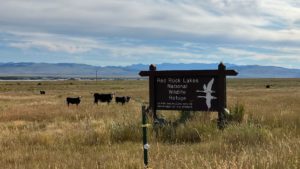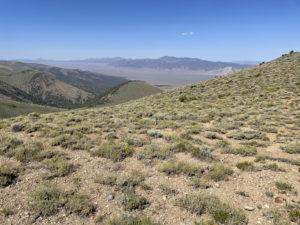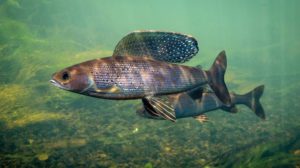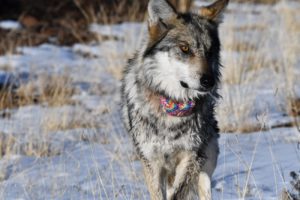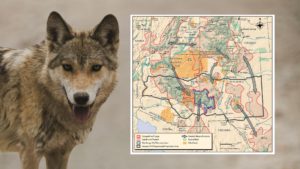FOR IMMEDIATE RELEASE
Tuesday, September 10, 2024
CONTACT
Laura Cunningham, Western Watersheds Project, 775-513-1280, lcunningham@
Kevin Emmerich, Basin & Range Watch, 775-764-1080, emailbasinandran
Chandra Rosenthal, Public Employees for Environmental Responsibility, 303-898-0798, CRosenthal@peer.
New Transmission Line Ensures Destructive Energy Development on Great Basin’s Public Lands
LAS VEGAS, NV — Today, the Bureau of Land Management (BLM) approved a major 471-mile high voltage transmission line from Las Vegas to Reno, opening up Nevada’s most remote, scenic, and biologically significant locations. The so-called “Greenlink West” transmission line would adversely impact wetlands, sage grouse habitat, lands with wilderness characteristics, desert tortoise habitat, pronghorn habitat, Tribally and culturally significant lands, and places with dark night skies. Tourism-dependent small communities will be impacted.
“Greenlink West opens up vast areas of remote biodiverse deserts, Joshua tree habitats, sensitive sage grouse habitats, and forested basin and range landscapes to large-scale energy development, without balancing conservation needs,” said Laura Cunningham of Western Watersheds Project. “This represents a failure of the new public lands rule which was supposed to balance industrial extraction and development with conservation. We are very disappointed in the Interior Department.”
Greenlink West will impact Ice Age megafaunal fossils across 1½ miles of Tule Springs Fossil Beds National Monument in southern Nevada, a high-value park managed by the National Park Service that preserves some of the richest Pleistocene fossil beds in the country. Columbian mammoths, camels, ancient bison, ground sloths, and sabertooth cats have been recovered from these wetland deposits. Ground-penetrating radar indicated possible large mammoth tusks right under one of the proposed massive foundation areas needed to anchor the 200-foot high transmission towers.
Chandra Rosenthal, Rocky Mountain PEER Director expressed deep concern, stating, “The National Park Service and BLMs’ willingness to compromise the boundaries of Tule Springs National Fossil Monument undermines the purpose of our national parks—that is ‘to protect and preserve our natural and cultural heritage for future generations.’ The final decision sets a dangerous precedent for the future of our national monuments and it looks as if we have been forced to seek legal remedy.”
“How would probable Columbian mammoth fossils survive the installation of steel structures that weigh thousands of pounds?” asked Kevin Emmerich, Co-Founder of Basin and Range Watch. “The project is not consistent with the conservation mission of the National Park Service, nor does it take adequate measures to protect desert tortoise, Amargosa River wetlands, sage grouse, archeology sites and pronghorn along its route to the Reno area spanning hundreds of miles. The project opens up vulnerable public lands near Tonopah with wilderness quality to heartbreaking industrial development.”
The line will cut through crucial connectivity habitat for the federally threatened Mojave desert tortoise and mountain sagebrush habitat for the bi-state sage grouse—the sage grouse could be impacted by collision hazards presented by the giant new transmission project. The high-voltage line is mapped to slice through rare plant populations, including white-margined penstemon.
“Wherever transmission lines are built, large-scale energy projects are likely to follow,” added Cunningham. “This transmission line could be the death knell for healthy native ecosystems on vast stretches of western public lands.”
Basin and Range Watch is a non-profit working to conserve the deserts of Nevada and California and to educate the public about the diversity of life, culture, and history of the ecosystems and wild lands of the desert.
The mission of Western Watersheds Project is to protect and restore western watersheds and wildlife through education, public policy initiatives, and legal advocacy.
Public Employees for Environmental Responsibility protects public employees who protect our environment. We are a service organization for environmental and public health professionals, land managers, scientists, enforcement officers and other civil servants dedicated to upholding environmental laws and values. We work with current and former federal, state, local and tribal employees.
###
Read the conservation group comments on Greenlink West
See the ground-penetrating survey report
View 2014 legislation establishing Tule Springs Fossil Beds National Monument


